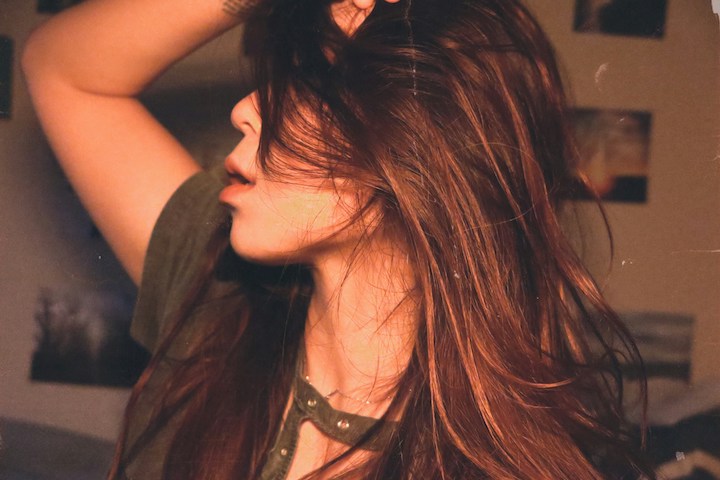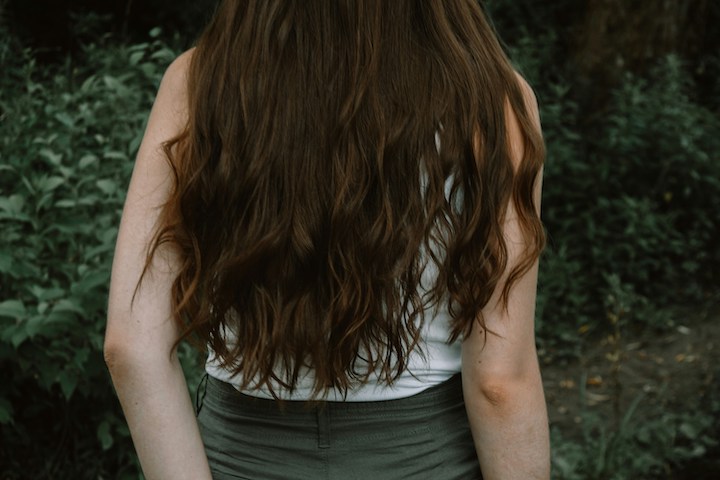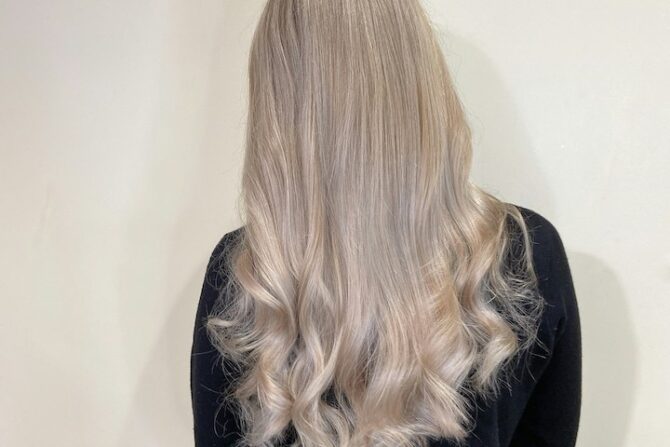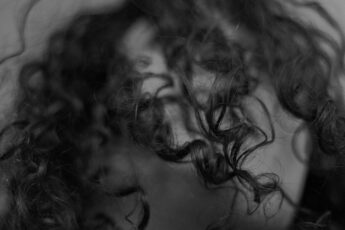Have you ever stared at a hair dye box and thought, “What on earth is level 6 ash brown, and why should I care?” I’ve been there too. You walk into a salon—or maybe you’re standing in front of a shelf full of hair color boxes—and everything feels more complicated than it should be.
But here’s the thing: once you understand the hair color level system, everything clicks. You stop feeling like you’re guessing. And honestly, knowing how it works can save you from some hair color disasters.
So in this guide, I’m going to walk you through the whole thing—no fluff, no fancy science talk. Just real, simple explanations you can use right away.
Table of Contents
Key Takeaways
- The hair color level system shows how light or dark a hair color is, from Level 1 (black) to Level 10 (platinum blonde).
- Levels have nothing to do with the actual shade—just depth.
- Tone and level work together. You need to understand both to get the result you want.
- Knowing your natural level helps you plan your color journey.
- The higher the level, the lighter the color—and the more lift you’ll need.
- Don’t ignore levels when picking hair dye. They make all the difference.
What the Hair Color Level System Actually Means
Let’s start with the basics. The hair color level system is a scale that measures how light or dark a hair color is. It doesn’t talk about whether your hair is red, blonde, or blue—just how deep or pale the color looks.
This scale usually runs from Level 1 to Level 10, though some professional charts go up to 12.
- Level 1 is the darkest—think jet black.
- Level 10 is the lightest—like very pale platinum blonde.
It’s kind of like turning up the brightness on your phone screen. The color changes in intensity, but it’s still the same image. That’s how levels work. They just show the depth or lightness of the shade.
So, when someone says, “I dyed my hair to a level 7,” they’re talking about how light or dark it is—not the actual color name like “caramel” or “chestnut.”
Also Read: Shiny Hair Secrets: Hair Glazing Techniques That Actually Work
The Hair Color Chart: A Quick Look at the Levels
Let’s break down the levels in a way that actually makes sense. Here’s a simple guide you can use next time you’re picking out a color:
- Level 1 – Jet Black
The deepest, richest black. No light passes through this. - Level 2 – Black
Still very dark, but not as inky as Level 1. - Level 3 – Dark Brown
Think dark chocolate or espresso. - Level 4 – Medium Brown
Slightly warmer and a bit lighter than dark brown. - Level 5 – Light Brown
Closer to milk chocolate. Feels more golden. - Level 6 – Dark Blonde
Somewhere between brown and blonde. Think caramel or sandy tones. - Level 7 – Medium Blonde
A soft, golden blonde. Very natural-looking. - Level 8 – Light Blonde
Lighter and brighter. Yellow tones may start to show here. - Level 9 – Very Light Blonde
Pale blonde with very little depth. Almost icy. - Level 10 – Platinum Blonde
Super pale. Looks almost white or silver.
If you’ve seen color names like “Level 6 Ash Blonde” or “Level 5 Warm Brown,” now you know what those numbers really mean—they’re pointing to how dark or light the color is.

Why the Hair Level System Even Matters
You might be thinking, Okay, but why should I care about any of this?
Here’s the truth: when you understand your current level and what level you’re trying to get to, you’re less likely to end up with green hair—or worse, orange roots.
The hair color level system helps you figure out things like:
- How much lift (lightening) you’ll need to go blonde.
- What developer strength to use if you’re dyeing your hair.
- Whether you need to pre-lighten before applying a fashion color like blue or purple.
It gives you control. Instead of picking a color and hoping for the best, you can start making decisions like a pro.
Natural Hair Color vs. Artificial Color: How Levels Help
Let’s say your natural hair is a Level 3 (dark brown), and you want to go to a Level 8 (light blonde). That’s a five-level jump. And guess what? Most box dyes aren’t strong enough to take you that far on their own. You’ll probably need bleach or a professional lightener.
On the other hand, if you’re already a Level 7 and want to go to Level 9, that’s a small jump—and much easier to do at home.
So, figuring out your natural level is step one. You can usually tell just by looking at a hair color chart and matching your roots. If you’re unsure, ask a stylist to help you find your level next time you’re at the salon.
This also works when you’re going darker. Going from a Level 9 to a Level 4 means your hair might grab color differently—because it’s porous from being lightened. Knowing your starting point helps you predict how the dye will behave.

How Tone and Level Work Together
Now, let’s talk tone—because this is where a lot of people get confused.
While level tells you how light or dark the color is, tone tells you what kind of shade it is. Warm? Cool? Neutral?
So two people can both be a Level 6, but one might have:
- Level 6 Ash Blonde (cool tone, slightly gray or smoky)
- Level 6 Golden Blonde (warm tone, with yellow or honey notes)
This is super important when you’re covering grays or correcting color. If you go too cool, your hair might look dull. Too warm, and you might get brassy.
Knowing how level and tone work together helps you mix and match shades that actually look good on you—not just in the box picture.
Choosing the Right Hair Color for You Based on Level
Let’s say you want to dye your hair but don’t know where to start. Here’s how to use levels to your advantage:
If your natural hair is Level 2 or 3, going blonde is going to take time. You’ll need multiple sessions if you want to keep your hair healthy.
If you’re a Level 5 or 6, you have more flexibility. You can go lighter or darker with less risk.
Already at Level 8 or 9? You’ve got a blank canvas. Pastels, silvers, and bold colors are easier to achieve at this point.
The main thing to keep in mind: the bigger the jump, the more you need to prep. That might mean using bleach, toning afterward, or spacing things out to avoid damage.
Check Out: The Real Hair Botox Benefits (The Basic That No One Explains Clearly)
Common Mistakes to Avoid
Let’s save you from some of the trouble I’ve seen (and lived through):
Mistake 1: Ignoring your starting level
If you don’t know what you’re starting with, you’re basically guessing your outcome. And that never ends well.
Mistake 2: Choosing a tone that doesn’t match your undertone
Warm skin tones usually look better with warm colors. Cool skin tones love ashy shades. Mixing the two can leave you looking washed out.
Mistake 3: Thinking box dye results are guaranteed
Those models on the front? Their starting hair was already close to the target shade. If you’re coming from a different level, your result might look nothing like the box.

Conclusion
Hair color doesn’t have to be a guessing game. Once you understand the hair color level system, everything gets easier. You can look at a box and know exactly what kind of result to expect. You can talk to a stylist and actually understand what they’re saying.
Most importantly? You stop making random choices and start making smart ones.
So next time you’re thinking about a new hair color, take a second to check your level. Trust me—it’s one small thing that makes a huge difference.
Frequently Asked Questions
What’s the difference between hair level and hair tone?
Hair level is the lightness or darkness. Hair tone is the shade—warm, cool, or neutral.
Can I skip levels when lightening my hair?
Not safely. Jumping too many levels at once without proper technique or lighteners can fry your hair.
What level is best for covering gray?
Levels 5 to 7 usually give good gray coverage while still looking soft. Always choose a neutral or warm tone for better coverage.
How do I find my current hair level?
Match your roots to a professional hair color chart. If you’re unsure, ask your stylist for help—they can pinpoint your level in seconds.



